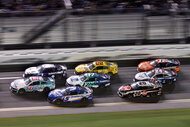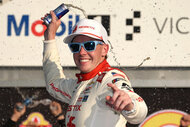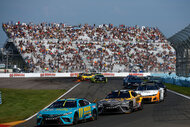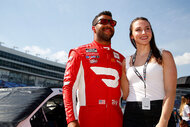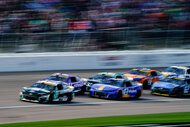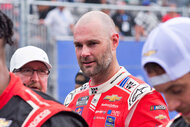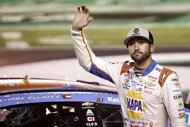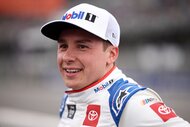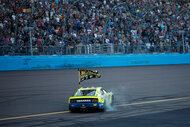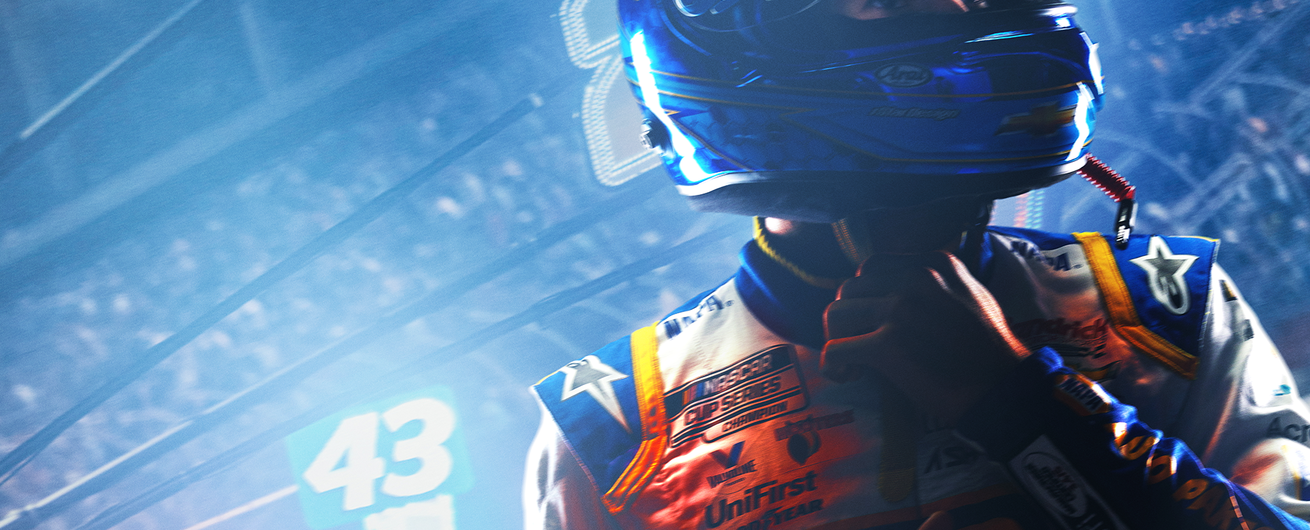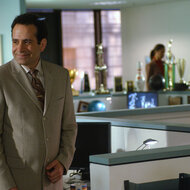Everything You Need To Know About A NASCAR Pit Stop
In NASCAR, the difference between winning and losing can come down a crew's delicate dance on pit road.
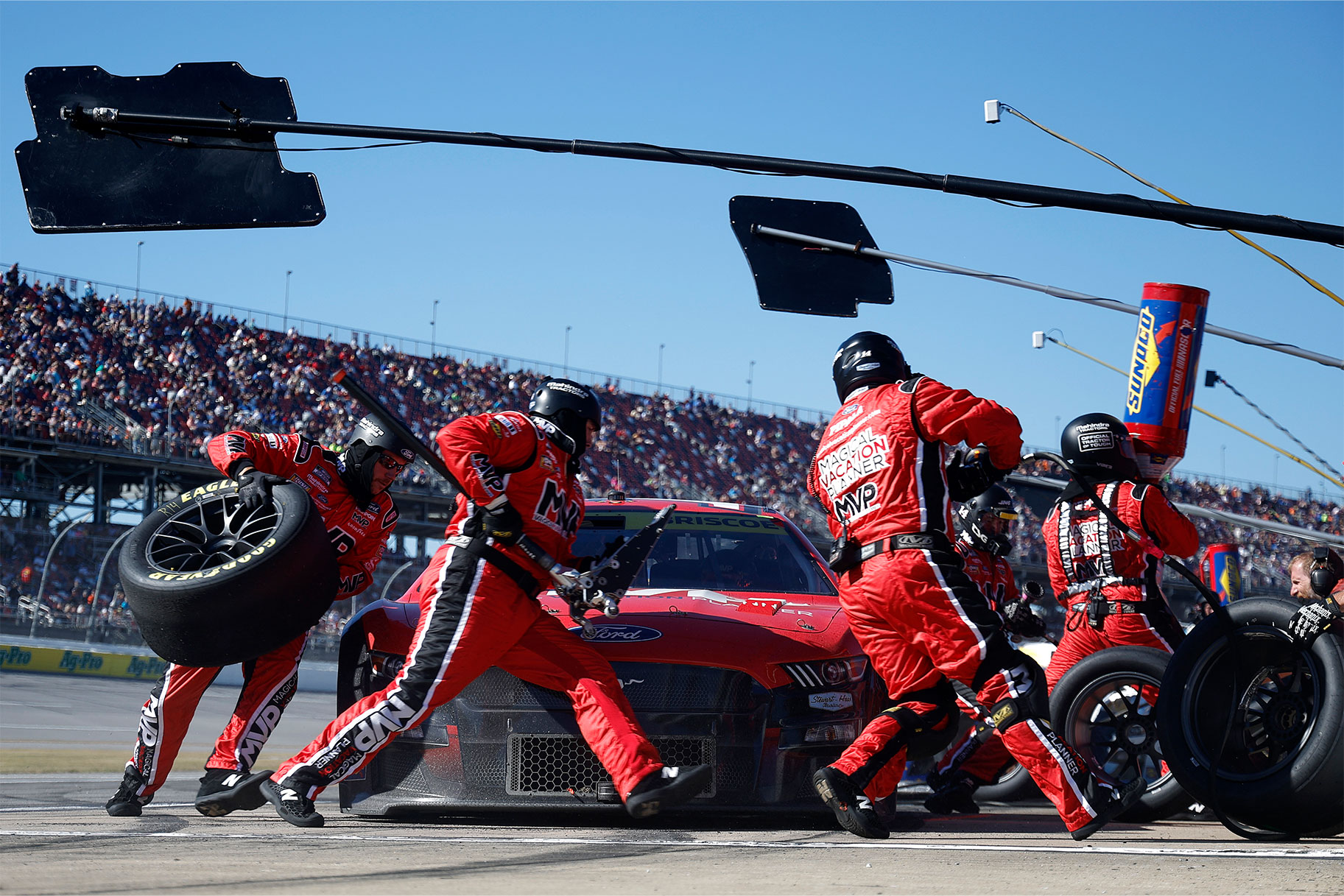
Though not as elegant nor mysterious as the Mono Lisa, the synchronized ballet of mechanical components that drive an oily, sweat-saturated NASCAR pit stop is surely one a mastermind like Da Vinci would appreciate. In addition to intense weight training and a diverse multitude of cardio workouts, crews drill down on the minutia of their pit stop rehearsals sometimes up to seven days a week, knowing that in an instant, an infinite number of extraneous factors could throw the proverbial wrench into their best laid plans. But that’s why they prep. Battling through often scorching heat or rain, it’s an anxiety-inducing, adrenaline-fueled dance that must be impeccably timed and engrained in the DNA of any viable pit crew. And like with all things NASCAR, speed counts.
Just how fast are we talking about? In previous years, a proper pit stop to change four tires and refuel had a sweet spot window between 11 and 12 seconds, but the advent of the 2022 Next Gen car has dramatically affected the evolution of the current pit stop. Instead of five lug nuts on the wheels, the new, larger aluminum wheels only have one center-locking fastener. With teams strategically tackling the right side of the car first, the tire changer can shave off more precious time since there’s only one fastener instead of five. This change can potentially reduce that old window by one or two seconds. On the flip side, the Next Gen car also features a 20-gallon fuel capacity. That’s an 8% increase from the previous model, requiring more time to fuel the car. And as Ricky Stenhouse Jr. has noted, the new transmission in the Next Gen car also means drivers have needed to modify their process with the clutch and shifter.
RELATED: Ross Chastain Shoots Down Next Gen Car Critics: 'They Don't Speak For All Of Us'
“Coming into pit road is totally different,” Stenhouse revealed to the NASCAR Wire Service. “Getting into your pit box is difficult. You’re downshifting on the way into pit road. So, you get to second gear from fifth. [Previously,] you would always just throw it in neutral.”
“Now you have to push the clutch in and go through first, then go to neutral to get there,” Stenhouse continued. “Then you can release the clutch and pull into your pit box. Or I’ve thought about leaving it in first gear and leaving the clutch in, because when you put these cars in gear, it really turns the rear tires a lot.
“You can’t do that when they’re trying to change tires, or, obviously, you’ll mess them up.”
Speed isn’t the only element that drivers and teams must master. NASCAR rules governing a pit stop must be heavily considered, and as Brad Keselowski found out the hard way at Talladega earlier this season, the consequence of breaking those rules is costly.
Upon entering pit road during lap 125, Keselowski’s tires locked up on him, and the star driver-slash-team owner zoomed into his stall at too fast. Though they range from track to track, proper speeds when entering pit road usually range between 35 and 55 miles per hour. Keselowski and his team were hit with a speeding infraction, and they would incur what’s called a pass-through penalty. This means that drivers must take another lap around the track and enter pit road at the appropriate speed designated by officials.
“As I was trying to get onto pit road, the car wouldn’t stop,” Keselowski revealed on the fourth episode of USA Network’s "Race for the Championship." “And so, I had a speeding penalty just by being too fast. And so, I was pushing really hard to try to get by some cars to get into the top 10. We started to drive to the front and then we had big issues.”
Those big issues reared their ugly head on lap 157.
“Matt, when I pit, I need you to try to fix the hood – the hood pin is out in front,” Keselowski said over his radio to his crew chief Matt McCall.
While his team scrambled to jump into action, searching for a hood pin, again, Keselowski entered pit road too fast.
“I try on the second stop to slow down actually a little earlier, and it still wouldn’t stop,” Keselowski noted on "Race for a Championship." “So, those two penalties clearly killed our day.” He and his team at RFK Racing would suffer a disappointing finish in 23rd place.
Several other rules-based penalties originate on pit road. Pit crew members must wait until a driver has pulled into the appropriate stall before jumping out, otherwise, the driver must travel through pit road again. Another rule is that crew member can’t lose control of the tires. If one takes a bad bounce and winds up on the track, that poses a tremendous hazard to driver safety, resulting in a pass-through penalty as well. Drivers can also be penalized for driving through more than three stalls as they make their way to their team’s stall. Though less common, additional penalties can arise from tools being left in the rear of the vehicle or equipment like jacks being left under the car as the driver races off. Both of these will result in either a pass-through penalty or what’s called a tail end of the line penalty where driver must drop back to the end of the field.
With so much at stake in each and every pit stop, it’s a race against the clock for NASCAR pit crews, one that can cost their teams valuable points or worse, endanger their own lives. But this is what crew members live for, and why so much of a driver and team’s overall success is derived from a well-choreographed pit stop. When a tenth of a second is the difference between winning and losing, at the end of the day, seamless execution is a must.
Can't get enough NASCAR action? Watch “Race For The Championship,” which follows the lives of NASCAR's biggest stars on and off the track, Thursdays at 10/9c on USA Network. And catch up on all race action on Peacock.

